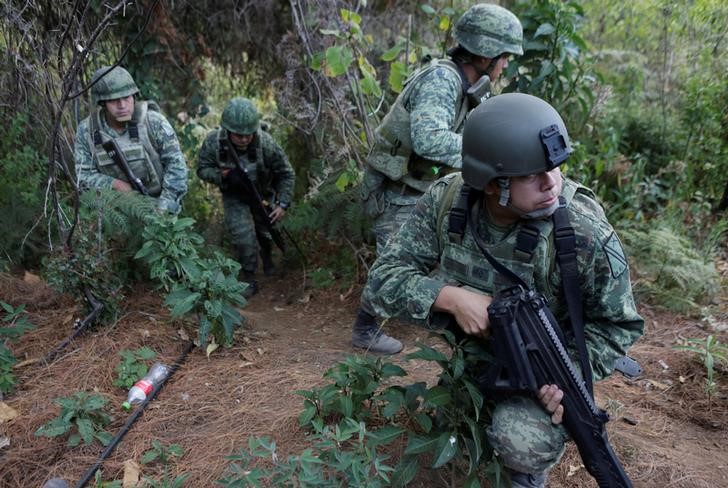
By Lizbeth Diaz
MAZATLAN, Mexico (Reuters) – Relatives of 17 suspected gang members killed late last week by police in northwest Mexico fear a skewed death toll points to what has become a grimly regular complaint in recent years – summary executions by security forces.
The 17 men, who authorities said were armed with 24 guns, were killed by police near the coastal city of Mazatlan in the unruly state of Sinaloa on Friday night. Another two people died nearby in what appeared to be earlier, related shootings, the state attorney general’s office said.
None of the suspects in the gun battle were found wounded or arrested.
Genaro Robles, Sinaloa’s head of police, put the outcome down to his officers’ better training and said there was no use of excessive force or extrajudicial killing in the exchange. Five of the 11 police involved suffered gunshot wounds. None died.
However, for relatives of the dead, the events raised the suspicion they were victims of a heavy-handed response by security forces of the kind that has stained Mexico’s human rights record in recent years.
Three people told Reuters they believed their relatives were killed in cold blood. Two of them cited gunshot wounds they said they had seen in the backs of their loved ones as evidence.
“They murdered them,” said the sister of one of the dead men as she waited outside a funeral home in Mazatlan. She declined to give her name for fear of reprisals. “They didn’t have a chance. This wasn’t a gun battle like they say in the news.”
Local municipal police also rejected the allegation, though human rights officials are investigating possible abuses.
Drug smugglers have been scrapping for control of the state amid a power vacuum following the deportation of iconic Sinaloa-native, drug boss Joaquin “El Chapo” Guzman.
Police chief Robles said officers were alerted to two people injured behind a mall in the small town of Villa Union on Friday evening, and chased down the suspected assailants, sparking a gun battle on a road outside town.
Blood was visible on the road when Reuters visited the scene at the weekend.
Nightime footage posted on social media afterwards purporting to show victims of the event, showed bodies piled up in the back of pickup trucks, with more scattered along a road. Reuters could not verify the authenticity of the videos.
The nephew of one of the victims said his uncle had worked for a drug cartel and had been shot from behind. “When I saw my uncle’s body it had gunshots in the back,” said the man, who also spoke on condition of anonymity.
One local policeman described the shootings as “butchery” and unlike another recent gun-battle he had seen. He asked not to be named because he was not authorized to speak to the media.
STATE PROBE
Miriam Hernandez of the Sinaloa state Commission for Human Rights said the organization had opened an investigation into whether the killings involved human rights abuses.
Joel Ernesto Soto, head of the municipal police in Mazatlan, whose men fought in the gun battle, said he welcomed the probe.
“They can come and ask and speak to us. We’ll be here waiting,” he said, referring to the commission. “This event was completely fortuitous; there was nothing untoward.”
In 2015, police executed nearly two dozen suspected gang members in an ambush near the western town of Tanhuato, the national human rights commission found. It was one of the worst abuses by security forces in a decade of drug violence.
That followed another notorious incident in 2014 when 22 suspected cartel henchmen were killed by soldiers in Tlatlaya, a town a couple of hours southwest of Mexico City. Many of the soldiers were later acquitted of murder.
Police killed 17 people for every officer lost in gun battles in 2014, a study by Mexico’s National Autonomous University found. Experts said that ratio was consistent with excessive use of force.
Violence has risen sharply in Sinaloa since kingpin Guzman was sent to the United States in January, as splits within his once-dominant Sinaloa Cartel and attacks from rival gangs fed a killing spree.
There were 619 murders in Sinaloa in the first five months of 2017, up more than 75 percent from the same period in 2016.
“Everything is disintegrating,” policeman Soto said.
The family members gathered outside the Mazatlan funeral home said the rising violence was making police more corrupt.
“These killings were dirty,” said the mother of one of the victims, who also declined to give her name. “This wasn’t a fight. It was something else, but what can you do?”
(Writing by Gabriel Stargardter; Editing by Dave Graham and Lisa Shumaker)





